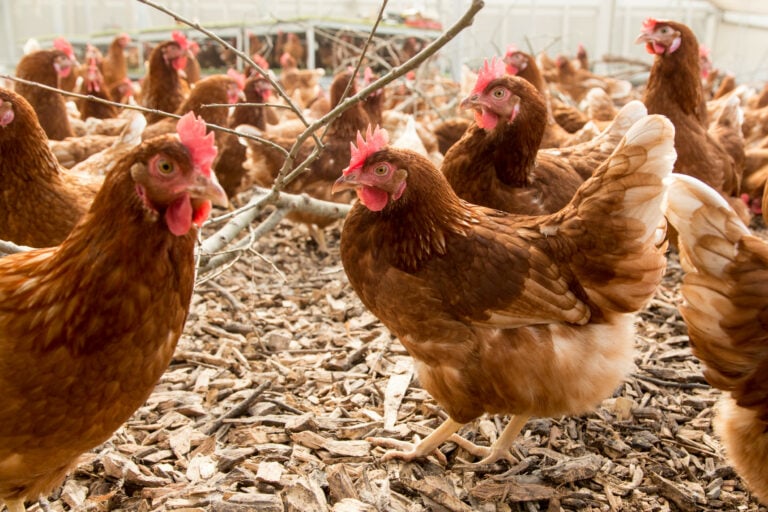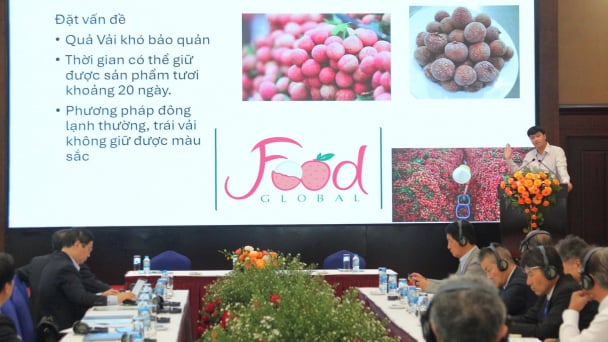June 17, 2025 | 04:38 GMT +7
June 17, 2025 | 04:38 GMT +7
Hotline: 0913.378.918
June 17, 2025 | 04:38 GMT +7
Hotline: 0913.378.918

BBFAW benchmark is divided into 5 pillars which include farm animal welfare policy commitments and farm animal welfare targets. Photo: Koos Groenewold.
The report analysed 150 global food companies based on 51 criteria across 5 pillars, ranking them into 6 tiers. This year’s results are the second since using the new, more stringent criteria that puts greater emphasis on companies’ welfare performance and approach to reducing their reliance on animal sourced food. Of the global food companies, 94% acknowledge farm animal welfare as a business issue and 128 companies have published a farm animal welfare policy statement.
Accelerating action
Several companies are accelerating action on the farm animal welfare front, with 14 companies improving their overall average score by 5 or more percentage points. The biggest improvement seen was from Arla Foods, which improved its score by 23%, moving from Tier 5 to Tier 4.
Greggs moved up a tier and joined Marks and Spencer and Waitrose in Tier 2 of the benchmark, meaning the companies have made farm animal welfare an integral part of their business strategy and achieved a score of between 62% and 80% against all BBFAW criteria.
Impact ratings
Marks & Spencer, Premier Foods, and Fonterra all achieved high ‘B’ grades on BBFAW’s Impact Rating for the first time. Most notably Fonterra, with their singular focus on dairy, have placed a significant emphasis on global reporting and impact, resulting in a rise in their Impact Rating by three grades (from ‘E’ to ‘B’).
However, the BBFAW report mentioned that even with this progress, some major food companies were taking little or no actions to address farm animal welfare in their operations.
“I’m delighted we have been recognised as one of the top global performers on animal welfare by the BBFAW. This clearly demonstrates the commitment of our procurement colleagues as they maintain their focus on safeguarding and improving welfare standards within our supply chain.” – Gareth Pullan,
Premier Foods director of procurement
Nicky Amos, executive director of the BBFAW, said it was encouraging to see companies responding positively to the more stringent criteria. “It’s not just animals that feel the benefit of those changes – with more space to roam and fewer farm animals suffering mutilations or long-distance live transportation. Companies feel the benefits too, in terms of building their reputation with consumers and getting ahead of potential regulation.”
Amos added: “While the leaders are picking up the pace, clearly much more needs to be done with the large majority of food companies, including many household names, stuck in BBFAW’s bottom 2 tiers. Too many food companies still provide limited evidence that they are managing animal welfare effectively.”
Other findings
According to the report:
(Poultryworld)

(VAN) The UNESCO Global Geopark revalidation of Non nuoc Cao Bang and the transition to a two-tier administrative model are presently undergoing a pivotal moment in Cao Bang, the northernmost province of Vietnam.
/2025/06/13/5330-2-004539_953.jpg)
(VAN) Changing policy mindset and removing investment barriers are urgent requirements to open up new development space for enterprises in the agricultural sector.

(VAN) The areas include the restoration of five million hectares of marine ecosystems.

(VAN) Dr. Le Van Nguyen, Director of the Institute of E-Commerce Management (ECM), emphasizes the potential for green development through the cultivation of fruit trees, particularly in provinces such as Son La.

(VAN) VAAS and numerous Vietnamese enterprises have signed cooperation agreements with Japanese partners to promote agricultural technology and trade connectivity.
/2025/05/29/5625-12-214801_567.jpg)
(VAN) Provincial mergers in the Mekong Delta promise to streamline administration, expand inter-provincial raw material areas, and foster close linkages in agricultural value chains, benefiting both businesses and cooperatives.

(VAN) Merging Mekong Delta provinces contributes to the expansion of agricultural raw material areas, addressing previous constraints caused by provincial boundaries. Additionally, this expansion will reduce costs and strengthen linkages between businesses, cooperatives, and farmers.